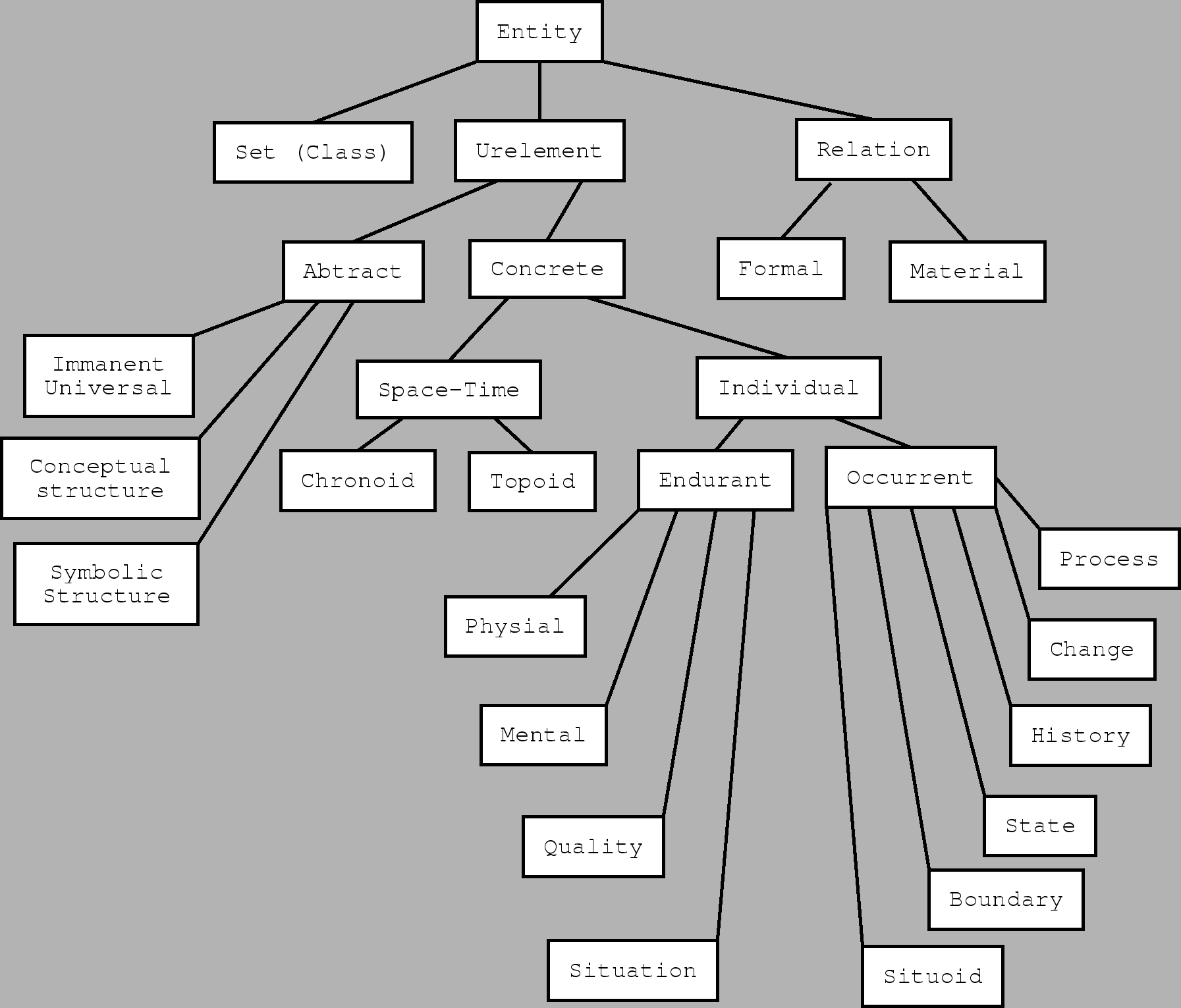Next: Universals Up: General Formal Ontology Previous: General Formal Ontology Contents
Figure 4.3 shows the categories that are used in the
GFO. Categories are collections of entities with a certain
intension. If an entity is an instance of a certain category, then it
has certain properties due to membership in that category. Let ![]() be
an entity, and
be
an entity, and  a category. We will write
a category. We will write ![]() if
if ![]() is an
instance of
is an
instance of  . As usual, we can also write
. As usual, we can also write ![]() if we mean,
that
if we mean,
that ![]() is a member of the set
is a member of the set  . However, intensionality is lost
in the use of sets. Still, there is some relation between sets and
categories:
. However, intensionality is lost
in the use of sets. Still, there is some relation between sets and
categories:
A category is any of the broadest classes of ``things'', where ``thing'' here means anything that can be discussed and cannot be reduced to any other class. For example taking ``physical object'' as a category implies that physical object-hood cannot be reduced or expressed in any other terms, such as a bundle of properties as in section 4.1.2.
The GOL-categories that are of concern to this thesis are the categories of situation, situoid, and relations to some degree, as they are needed to build up facts. We also need to understand the concept of time and space in GOL, as well as the concept of a universal.